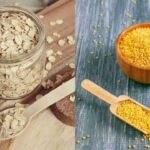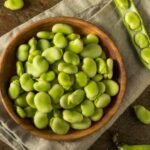In the world of food debates, few topics spark as much discussion as the comparison between chicken and paneer. Both are popular sources of protein, but they come from very different origins and have distinct nutritional profiles. Whether you’re a dedicated carnivore or a staunch vegetarian, the question remains: which one is healthier? Let’s dive into the details to find out.

Nutritional Breakdown:
Chicken:
Chicken is a staple in many diets worldwide, prized for its high protein content and relatively low fat. It’s a complete protein source, meaning it provides all the essential amino acids our bodies need. Additionally, chicken is rich in vitamins and minerals such as B vitamins, particularly niacin and B6, as well as phosphorus and selenium. However, the healthiness of chicken can vary depending on how it’s prepared. Grilled or baked chicken without the skin is generally considered healthier than fried or breaded varieties.
Paneer:
Paneer, on the other hand, is a type of fresh cheese common in South Asian cuisine, particularly Indian. Made by curdling milk with a food acid, such as lemon juice or vinegar, and then pressing the curds to form a solid block, paneer is a vegetarian-friendly source of protein and calcium. It also contains good amounts of phosphorus, magnesium, and vitamins like B12. However, paneer tends to be higher in saturated fat and cholesterol compared to chicken, due to its dairy content.
Health Considerations:
When comparing the healthiness of chicken and paneer, several factors come into play:
- Protein Content: Both chicken and paneer are excellent sources of protein, essential for muscle growth and repair. However, chicken typically contains more protein per serving than paneer.Protein is an essential macronutrient vital for numerous physiological functions in the human body, including muscle growth, repair, and overall maintenance. Both chicken and paneer are valued for their protein content, making them popular choices for individuals seeking to meet their daily protein requirements. However, when comparing the protein content of chicken and paneer, there are significant differences to consider.Chicken, particularly lean cuts like chicken breast, is renowned for its high protein content. On average, a 3-ounce (85 grams) serving of cooked chicken breast provides approximately 26 grams of protein. This makes chicken an excellent option for individuals looking to increase their protein intake without consuming excessive amounts of fat or carbohydrates. Additionally, chicken is a complete protein source, meaning it contains all nine essential amino acids that the body cannot produce on its own and must obtain from the diet.
In contrast, paneer, while still a valuable source of protein, typically contains less protein per serving compared to chicken. A similar 3-ounce (85 grams) serving of paneer provides roughly 18 grams of protein. While this is still a respectable amount, it falls short of the protein content found in chicken. Furthermore, paneer is not a complete protein source as it lacks the amino acid methionine, although this deficiency can be compensated for by consuming other protein sources that complement paneer’s amino acid profile.
Despite containing less protein per serving, paneer offers some unique advantages. For individuals following vegetarian or lacto-vegetarian diets, paneer serves as an important source of protein, especially in cultures where meat consumption is limited. Additionally, paneer is rich in calcium, which is crucial for bone health and plays a vital role in various physiological processes within the body.
- Fat Content: While chicken is lower in saturated fat compared to paneer, the fat content can vary depending on the cut of chicken and how it’s prepared. Skinless chicken breast is the leanest option, while paneer is inherently high in saturated fat due to its dairy nature.When comparing the fat content of chicken and paneer, it’s essential to consider not only the total fat content but also the types of fats present and their impact on health.Chicken, particularly skinless chicken breast, is renowned for being a lean source of protein with relatively low fat content. On average, a 3-ounce (85 grams) serving of cooked, skinless chicken breast contains approximately 3 grams of total fat. Additionally, chicken breast is low in saturated fat, the type of fat associated with increased risk of heart disease and other health issues. Instead, chicken breast primarily contains unsaturated fats, including monounsaturated and polyunsaturated fats, which are considered heart-healthy fats and can help improve cholesterol levels when consumed in moderation.
However, the fat content of chicken can vary depending on the cut and how it’s prepared. For example, chicken thighs and drumsticks contain slightly more fat compared to chicken breast, with the skin-on versions having higher fat content than skinless varieties. Additionally, certain cooking methods, such as frying or deep-frying, can significantly increase the fat content of chicken due to the added oil.
In contrast, paneer is inherently higher in fat compared to chicken, primarily because it’s a dairy product. A 3-ounce (85 grams) serving of paneer typically contains around 10 grams of total fat, with a significant portion of that being saturated fat. Saturated fat can contribute to elevated levels of LDL cholesterol (often referred to as “bad” cholesterol) in the blood, which is a risk factor for cardiovascular disease.
While paneer provides valuable nutrients like protein and calcium, individuals should be mindful of its saturated fat content, particularly if they have concerns about heart health or cholesterol levels. Incorporating paneer into the diet in moderation and opting for lower-fat dairy options when possible can help mitigate its impact on overall fat intake.
- Micronutrients: Chicken provides a wider range of vitamins and minerals compared to paneer, particularly B vitamins and selenium. However, paneer is a valuable source of calcium, which is essential for bone health.When comparing the micronutrient profiles of chicken and paneer, it’s important to consider the range of vitamins and minerals each food provides and their respective health benefits.Chicken is a rich source of various vitamins and minerals, particularly B vitamins and selenium. B vitamins play essential roles in metabolism, energy production, and overall cellular function. Chicken, especially darker cuts like thighs and drumsticks, contains significant amounts of vitamins B6 and B12, as well as niacin (vitamin B3) and riboflavin (vitamin B2). These vitamins are crucial for maintaining proper nerve function, supporting red blood cell production, and promoting healthy skin and eyes.
In addition to B vitamins, chicken is also a good source of selenium, a trace mineral with antioxidant properties. Selenium helps protect cells from damage caused by free radicals and supports thyroid function and immune health. Consuming selenium-rich foods like chicken can contribute to overall antioxidant defense and reduce the risk of chronic diseases.
On the other hand, paneer is particularly valued for its high calcium content. Calcium is an essential mineral that plays a critical role in bone health, muscle function, and nerve transmission. Adequate calcium intake is crucial during all stages of life, but especially during childhood and adolescence when bones are still growing and developing. Including calcium-rich foods like paneer in the diet can help support bone density and reduce the risk of osteoporosis and fractures later in life.
While paneer provides valuable calcium, it may lack the wide range of vitamins and minerals found in chicken. However, paneer can still contribute to overall nutrient intake, especially for individuals following vegetarian or lacto-vegetarian diets who may have limited sources of calcium.
- Dietary Restrictions: For those following specific diets, such as vegetarianism or lacto-vegetarianism, paneer offers a valuable source of protein that chicken cannot provide. Conversely, chicken is a staple in many low-carb and high-protein diets.The dietary restrictions of individuals play a significant role in determining whether chicken or paneer is a suitable protein source for their diet.For those following specific diets such as vegetarianism or lacto-vegetarianism, paneer offers a valuable source of protein that chicken cannot provide. As a dairy product, paneer is entirely vegetarian-friendly, making it an excellent protein option for individuals who abstain from consuming meat and poultry. Paneer serves as a versatile ingredient in vegetarian dishes, providing a substantial protein boost while also adding texture and flavor. Its inclusion in the diet ensures that vegetarians and lacto-vegetarians can meet their protein needs without compromising their dietary principles.
Conversely, chicken is a staple in many low-carb and high-protein diets, particularly those focused on weight loss or muscle gain. Chicken, especially lean cuts like breast meat, is prized for its high protein content and low carbohydrate content, making it an ideal choice for individuals following these types of diets. Additionally, chicken is versatile and can be prepared in various ways, from grilling and baking to sautéing and roasting, allowing for flexibility in meal planning and adherence to dietary preferences.
Furthermore, chicken is often included in paleo, ketogenic, and other low-carb diets due to its minimal carbohydrate content and emphasis on high-quality protein sources. These diets prioritize whole foods and limit processed carbohydrates, making chicken a preferred protein source for individuals looking to control their carbohydrate intake while still meeting their nutritional needs.
Conclusion:
In the debate between chicken and paneer, the answer to which is healthier ultimately depends on individual dietary preferences, nutritional needs, and health goals. Both chicken and paneer can be part of a balanced diet when consumed in moderation and prepared healthily. Choosing lean cuts of chicken and incorporating paneer alongside a variety of other protein sources can help ensure you’re meeting your nutritional requirements. At the end of the day, the key is to focus on overall dietary patterns and enjoy a diverse array of foods for optimal health.
The top 20 frequently asked questions (FAQs) about the comparison between chicken and paneer.
- Is chicken or paneer healthier? Both chicken and paneer have their own nutritional benefits. Chicken tends to be higher in protein and lower in fat, while paneer is a good source of protein and calcium.
- Which one is better for weight loss: chicken or paneer? Chicken is often favored for weight loss due to its high protein content and lower calorie and fat content compared to paneer.
- Can vegetarians consume chicken? No, chicken is not suitable for vegetarians as it is a type of poultry.
- Is paneer a complete protein source like chicken? No, paneer is not a complete protein source as it lacks some essential amino acids. However, it can complement other protein sources in a vegetarian diet.
- Which one is better for muscle building: chicken or paneer? Both chicken and paneer can contribute to muscle building due to their high protein content. However, chicken is often preferred for its complete protein profile and lower fat content.
- Are there any health risks associated with consuming chicken? Chicken is generally considered safe to consume when cooked properly. However, there may be health risks associated with consuming undercooked or contaminated chicken, such as foodborne illnesses.
- Can paneer be a part of a low-carb diet? Yes, paneer can be included in a low-carb diet as it contains minimal carbohydrates and is rich in protein and fat.
- Which one is more versatile in cooking: chicken or paneer? Both chicken and paneer are versatile ingredients and can be used in a variety of dishes. The choice depends on personal preferences and dietary requirements.
- Is chicken or paneer better for bone health? Paneer is a better source of calcium, which is essential for bone health. However, chicken also contains some minerals like phosphorus that contribute to bone health.
- Can chicken and paneer be consumed together in a meal? Yes, chicken and paneer can be combined in dishes to increase protein intake and add variety to meals.
- Are there any vegetarian alternatives to chicken? Yes, there are various vegetarian alternatives to chicken, such as tofu, tempeh, seitan, and mock meats made from plant-based ingredients.
- Which one is more environmentally sustainable: chicken or paneer? The environmental sustainability of chicken and paneer production depends on various factors, including farming practices, land use, and resource consumption.
- Is paneer suitable for lactose-intolerant individuals? Paneer is a dairy product and may contain lactose, so it may not be suitable for individuals with lactose intolerance. However, some people with lactose intolerance can tolerate small amounts of paneer.
- Can paneer be included in a vegan diet? No, paneer is a dairy product and is not suitable for a vegan diet. However, there are vegan alternatives to paneer available, such as tofu or homemade nut-based cheeses.
- Which one is more cost-effective: chicken or paneer? The cost of chicken and paneer can vary depending on factors such as location, production methods, and demand. In some regions, chicken may be more affordable, while in others, paneer may be cheaper.
- Does paneer provide any health benefits beyond protein? Yes, paneer is also a good source of calcium, phosphorus, and vitamins like B12. These nutrients play various roles in supporting overall health and well-being.
- Are there any cultural or religious considerations associated with consuming chicken or paneer? Yes, cultural and religious beliefs may influence dietary choices and preferences regarding the consumption of chicken and paneer. For example, some cultures may have specific dietary restrictions or practices related to the consumption of meat or dairy products.
- Can paneer be used as a substitute for chicken in recipes? Yes, paneer can be used as a substitute for chicken in recipes to create vegetarian versions of dishes. However, the texture and flavor of paneer are different from chicken, so adjustments may be needed in cooking methods and seasonings.
- Which one is more filling: chicken or paneer? Both chicken and paneer can be filling due to their protein content. However, individual preferences and satiety levels may vary.
- Are there any ethical considerations associated with consuming chicken or paneer? Ethical considerations such as animal welfare and environmental impact may influence dietary choices regarding the consumption of chicken and paneer. Some individuals may choose to prioritize ethical and sustainable food practices when selecting their food options.
Register for My Upcoming Masterclass HERE
See You in the Live Masterclass
Sunil Chaudhary stands as a preeminent global Leading digital coach, boasting a diverse clientele hailing from over 50 nations. Renowned for his prowess as an exemplary SEO expert, business automation coach, and landing page authority, Chaudhary also holds the distinction of being esteemed as the finest business coach in India. Beyond technical domains, he imparts invaluable insights into mindset, success, and life skills, thus encompassing a holistic approach to mentorship.
Join FREE Courses HERE
Know The Author:
 Sunil Chaudhary aka Suniltams Guruji is India’s Leading Digital Coach. He provides complete Digital Skill Development Coaching with great support. Sunil has trained more than 25000 students and helped more than 1100 businesses so far. Sunil is a well-known face across the world for Digital Coaching.
Sunil Chaudhary aka Suniltams Guruji is India’s Leading Digital Coach. He provides complete Digital Skill Development Coaching with great support. Sunil has trained more than 25000 students and helped more than 1100 businesses so far. Sunil is a well-known face across the world for Digital Coaching.
Digital Success Coach | Best SEO Coach India | Mindset Coach | Life Success Coach
Related posts:
 Ramadan 2024: 5 healthy sehri recipes to keep you full and energetic all day long
Ramadan 2024: 5 healthy sehri recipes to keep you full and energetic all day long
 Oats vs Millets: Which is a Nutritious Choice?
Oats vs Millets: Which is a Nutritious Choice?
 Cucumber vs. Zucchini: Which is Healthier?
Cucumber vs. Zucchini: Which is Healthier?
 Healthy Eating Habits for Women of All Ages
Healthy Eating Habits for Women of All Ages
 Superfood Coconut: Know These 5 Benefits of this Edible Fruit
Superfood Coconut: Know These 5 Benefits of this Edible Fruit
 Superfood Fava Beans: Know these 5 Benefits of Baakala
Superfood Fava Beans: Know these 5 Benefits of Baakala
 Cherries to Bananas: 5 Superfoods to Help You Get a Restful Night of Sleep
Cherries to Bananas: 5 Superfoods to Help You Get a Restful Night of Sleep
 Holi 2024: 5 Dietary Changes to Shed Pounds Before This Festive Season
Holi 2024: 5 Dietary Changes to Shed Pounds Before This Festive Season
 Superfood Pigweed: Unveiling the 5 Incredible Benefits of Amaranth
Superfood Pigweed: Unveiling the 5 Incredible Benefits of Amaranth

